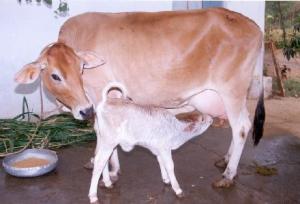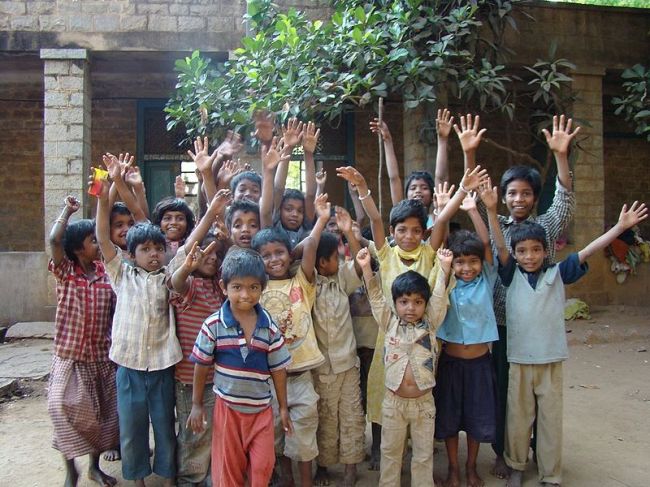Background :
 Traditional Indic agriculture and village economy has been significantly dependent on Indic cow / bull. While water buffalo has existed since ancient times in India (reference of demon Mahisasur riding a buffalo / slayed by Durga Ma) and milk of other mammals (like goat / yak / camel) has been and continues to be consumed, none except cow was given the title of mother.
Traditional Indic agriculture and village economy has been significantly dependent on Indic cow / bull. While water buffalo has existed since ancient times in India (reference of demon Mahisasur riding a buffalo / slayed by Durga Ma) and milk of other mammals (like goat / yak / camel) has been and continues to be consumed, none except cow was given the title of mother.
Over last 4 decades, the dynamics of agriculture have changed. Following factors have drastically changed and have all lead to Indian cow breeds reaching a precarious situation.
- Wide spread use of chemical fertilizers and pesticides,
- Wide spread use of tractors,
- Milk being sold by fat % – thus giving higher weightage to buffalo milk,
- Destruction of “gauchar” land (village common lands – left fallow for cow grazing),
- Forced hybridization and destruction of native cow breeds by Indian Govts,
- Promotion of export of beef as part of pink revolution and
- Promotion of illegal cattle export to Bangladesh under Mrs. Sonia Gandhi’s UPA regime
The small and marginal farmers, who often used cow dung / urine (with other natural solutions) as fertilizer as well as pesticide and the bull as draught animal, now purchase chemical fertilizers, pesticides and diesel for tractor fuel. 2, 000 Indian farmers have been committing suicide EVERY DAY.
Relooking at cow based agrarian economy in light of changed dynamics and using technological tools now available, a team of technocrat volunteers has been working at a Gau Shaala (cow shelter) having nearly 800 cows, in Ghazipur (Delhi / UP border near Anand Vihar Bus Terminal). Many new innovations have been done.
Goal :
Interview the subject experts like Shri Subodh Kumar (aged ~ 85 years) – a Gold Medallist in Engineering from BHU, who has spent last 25 years volunteering at the Gau Shaala and reading and understanding the science behind high status traditionally accorded to the cow.
Create a documentary / short films and a self published book that cover areas like :
- What are the differentiating characteristics of milk of Indian cow breeds vs Holstein Friesian, Jersey etc.
- What is the impact of A1 / A2 milks on our health ?
- Why is cow dung considered superior to dung from any other mammal
- Understand how distillates of cow urine – are helping reduce dosage medicines – from anti biotics to anti cancer drugs
- Understand why hybrid cattle were forced on the Indian farmers by the Govt. when Indian breeds have been preserved in US and Brazil
- How did cow breeding techniques lead to Gotra system followed in Hindu marriages (to prevent inbreeding, the bulls were always brought from another herd. The word gotra has gau or cow in its root)
- And many other interesting facts…..
Useful Reads :
About A1 / A2 milk
About destruction and struggle for preservation of native Indian cow breeds
- P Sainath’s articles in the Hindu newspaper, highlighting how hybrid breeds of cows were systematically promoted by the various governments, while destroying the native Indic cow breeds
Ideal Team :
- Interns must have some amount of “shraddha” for this work.While almost the entire team of volunteers at the Gau Shaala comes from technical / science background, and are very keen to freely discuss questions, a bias / preformed opinion against native cow breed protection work will simply not allow the immense amount of required work to happen in short time span available.
- 2 – 3 people to shoot videos
- 2 – 3 people to do story boarding
- 1 coordinator
- 2 – 3 people to take care of video editing work
- 2 – 3 people for video uploading, website / blog updation etc.
Contact Us :


